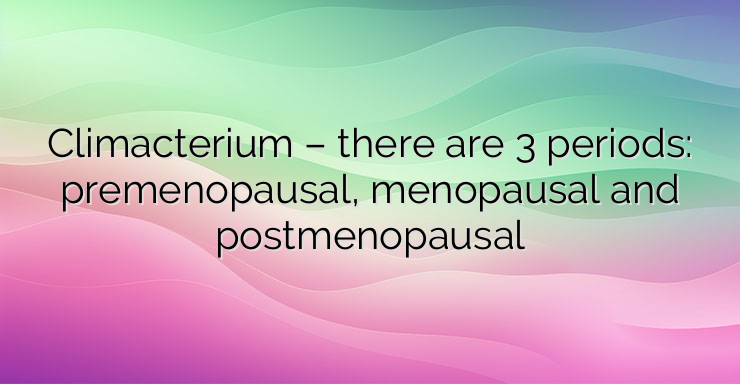What is Climacteric?
Climacteric, also known as menopause transition, is a natural phase in a woman’s life, marking the transition from her reproductive years to old age. It typically spans 10-15 years and is characterized by hormonal changes. This stage is divided into three periods: premenopausal, menopausal, and postmenopausal.
Premenopausal Period
The premenopausal period usually begins around a woman’s 40th birthday. During this time, there is a decline in ovarian activity. Initially, progesterone levels decrease, leading to changes in the menstrual cycle. Eventually, ovulation ceases, and the ovaries stop producing eggs suitable for fertilization.
Menopausal Period
Menopause begins from the last regular menstrual period and extends to 12 months after it. On average, menopause occurs at around 50 years and 6 months for women. During this period, the ovaries cease their endocrine function, signaling the end of the reproductive phase. Factors such as smoking and alcohol abuse can accelerate this process.
Postmenopausal Period
The postmenopausal period follows menopause and typically lasts around 10 years. Ovarian activity diminishes further, although the ovaries continue to produce hormones such as estrogen, progesterone, and androgens in altered ratios. This hormonal imbalance often exacerbates menopausal symptoms.
Common Complaints During Climacteric
Vasomotor Symptoms
One of the most prevalent complaints among climacteric women is vasomotor symptoms, commonly known as “hot flashes.” These episodes involve sudden feelings of heat, typically starting in the upper body and spreading. They are often accompanied by changes in skin temperature, facial flushing, headaches, palpitations, and dizziness. Night sweats are also common, disrupting sleep and causing fatigue.
Neuropsychiatric Disorders
More than half of women going through climacteric experience neuropsychiatric symptoms. These may include memory and concentration problems, depressed moods, feelings of hopelessness, decreased libido, and weight gain. The risk of conditions like myocardial infarction also increases due to hormonal changes.
Bone Health and Other Concerns
Menopause also brings about concerns regarding bone health. Osteoporosis, characterized by reduced bone density, increases the risk of fractures, particularly in the spine. Additionally, hormonal changes lead to vaginal atrophy, sexual discomfort, urinary tract issues, skin changes, and joint pains.
Treatment Options
Treatment for climacteric symptoms focuses on improving quality of life and managing irregular uterine bleeding. Hormone replacement therapy (HRT) with estrogen, and in women with a uterus, progestogen, is commonly prescribed. The goal is to use the lowest effective dose to alleviate symptoms. Estrogens are available in various forms such as tablets, patches, and implants, tailored to the patient’s needs. Plant-based estrogens are also utilized to alleviate symptoms effectively.


Leave a Reply